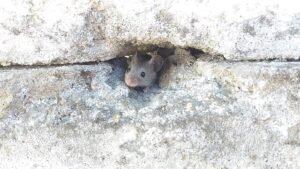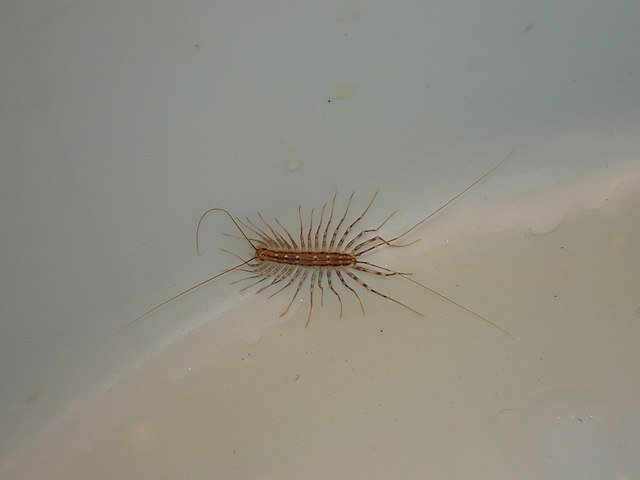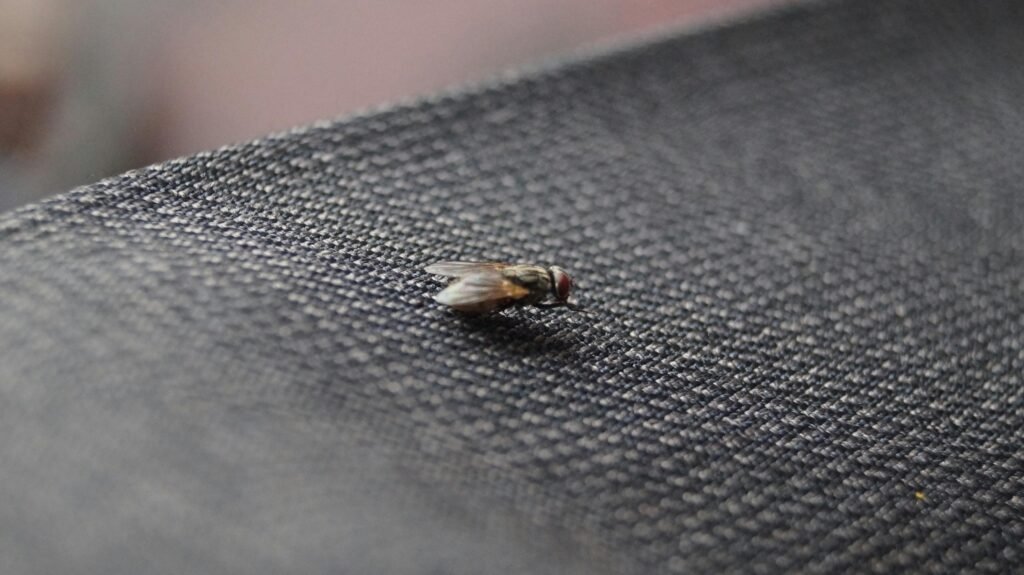House Mice (Mus musculus): Identification, Risks, and Complete Pest Control Guide
 The house mouse (Mus musculus) is one of the most common and widespread mammals in the world. Unlike occasional invaders such as cockroaches or ants, house mice are permanent pests that thrive in close association with humans. Their adaptability, rapid reproduction, and ability to live almost anywhere have made them notorious in homes, farms, warehouses, and food-processing facilities.
The house mouse (Mus musculus) is one of the most common and widespread mammals in the world. Unlike occasional invaders such as cockroaches or ants, house mice are permanent pests that thrive in close association with humans. Their adaptability, rapid reproduction, and ability to live almost anywhere have made them notorious in homes, farms, warehouses, and food-processing facilities.
Although small in size, house mice cause serious problems. They contaminate food, damage property, and spread pathogens. Their presence is also a major red flag for hygiene violations in restaurants, hotels, and healthcare facilities. For homeowners and businesses alike, understanding the biology and behavior of house mice is essential for effective control.
Identification
Recognizing a house mouse infestation starts with proper identification. Many people confuse them with other rodents such as rats, but there are clear differences.
Size: Adults measure 6–9 cm (2.5–3.5 in) in body length, with a tail of similar length.
Color: Gray to light brown fur, with a lighter belly.
Ears and Eyes: Large, rounded ears and small dark eyes compared to their body size.
Droppings: Rod-shaped, about 3–6 mm long, with pointed ends (different from blunt-ended rat droppings).
Odor: Strong, musky smell in infested areas.
Their small size and flexible skeleton allow them to squeeze through openings as small as 6 mm (the size of a pencil). This ability makes them especially hard to keep out of structures.
Biology and Ecology
The success of Mus musculus lies in its biology and behavior.
Reproduction: Females can produce up to 10 litters per year, with 5–8 young per litter. A single pair can result in dozens of offspring within months.
Diet: Omnivorous but prefers grains, seeds, and human food scraps. They only need about 3 g of food per day.
Water Needs: Can survive with very little free water, obtaining moisture from food.
Activity: Nocturnal, but may be active during the day in heavy infestations.
Nesting: Builds nests in walls, insulation, stored goods, or cluttered spaces using paper, fabric, or other soft materials.
Social Behavior: Lives in small colonies with dominant and subordinate individuals.
House mice are excellent climbers and can jump up to 30 cm. They also gnaw constantly, which causes structural damage and electrical hazards.
Global Distribution
The house mouse is a cosmopolitan species found on every continent except Antarctica. Originating in Asia, it spread worldwide through human trade and migration.
North America: Common in homes, farms, and cities.
Europe: Widespread in urban and rural areas.
Africa and Asia: Found in both villages and large cities.
Australia and New Zealand: Major agricultural pest.
Because of its close link to human settlements, the house mouse is rarely found in pristine wilderness. Its survival depends on human activity, food storage, and shelter.
Risks and Damage
House mice cause economic, structural, and health-related problems.
Food Contamination: They contaminate more food than they eat, leaving droppings, urine, and hair in stored products.
Disease Transmission: Known carriers of Salmonella, Hantavirus, and other pathogens.
Allergies and Asthma: Mouse allergens can trigger respiratory issues, especially in children.
Structural Damage: Their constant gnawing damages furniture, walls, insulation, and especially electrical wiring, which can lead to fires.
Agricultural Impact: Infest large-scale grain storage facilities, causing significant financial loss.
In commercial settings like restaurants or food plants, even a single mouse sighting can result in failed inspections and loss of reputation.
Signs of Infestation
Detecting house mice early is crucial. Common signs include:
Droppings along walls, in cupboards, or near food sources.
Gnaw marks on food packaging or wooden structures.
Scratching sounds in walls or ceilings, especially at night.
Nests made of shredded paper, fabric, or insulation.
Grease marks along baseboards (from oils in their fur).
Musky odor that intensifies with larger infestations.
Visual sightings usually indicate a larger hidden population, as mice avoid open areas when possible.
Control Methods
Managing Mus musculus requires an integrated approach. We need an holistic strategy and not only to put rodenticide here and there.
1. Sanitation
Keep your food sealed in airtight containers in good cupboards.
Dispose of garbage regularly.
Reduce clutter that can gives mice shelter.
2. Exclusion
Seal cracks, holes, and gaps larger than 6 mm. A house mouse only needs about 6–7 mm (roughly 1/4 inch) to squeeze through. Even their head can flatten enough to pass through incredibly small openings.
- Seal entry points with durable materials such as gypsum plaster, cement, or steel wool combined with caulk. Avoid using standard spray foams, since many of them are easy for mice to chew through – and in some cases, they even seem attractive to gnaw on.
Use steel, or metal mesh; mice can chew through plastic or wood.
Install door sweeps and it is very importan to repair any broken window screens.
3. Trapping
As a pest control professional, I have found that only buildings with a consistent system of traps placed around the structure and yard have a real chance of avoiding contact with mice.
Snap traps: Highly effective when placed along walls, inside rooms or in basements. Their main advantage is that they hold the mouse in place after the kill, so there is no need to search for carcasses elsewhere in the building.
Glue boards: Less humane but useful in certain areas.
Live traps: Catch-and-release the mouse somewhere else is not recommended, as mice return or spread to other areas.
4. Rodenticides
Anticoagulant baits can be effective but pose risks to pets, children, and non-target wildlife.
Should only be applied by licensed professionals following regulations.
Advanced Approaches
Modern pest management uses more than traditional traps.
Electronic Monitoring: Smart traps send alerts in your mobile when mice are caught.
Biological Control: Encouraging predators such as owls or cats in rural areas.
Integrated Pest Management (IPM): Combining sanitation, exclusion, and targeted treatment for long-term prevention.
Pheromone Tracking: Research is exploring ways to disrupt mouse communication to reduce reproduction.
In sensitive industries like food processing, regular monitoring and professional inspections are essential.
Cultural and Historical Context
House mice have been associated with humans for thousands of years.
In ancient Greece and Rome, they were seen as both pests and symbols of resourcefulness.
In Chinese zodiac tradition, the rat (closely related to the mouse) represents cleverness and prosperity.
In modern culture, mice have a dual image: destructive pests on one hand, beloved characters like Mickey Mouse on the other.
Despite their cultural symbolism, in real life house mice remain a global nuisance.
FAQ Section
1. How long do house mice live?
In the wild, they live less than a year. Indoors, with food and shelter, they may survive up to 2 years.
2. Do house mice carry diseases harmful to humans?
Yes. They can transmit Salmonella, Leptospirosis, and other pathogens through droppings and urine.
3. How can I tell if I have house mice or rats?
Mice are smaller, with finer droppings and a more musky odor. Rats are larger with blunt droppings.
4. What smells do mice hate?
Strong odors like peppermint oil, ammonia, or predator urine may repel them, but these are not long-term solutions.
5. Can cats control house mice?
Cats can reduce mouse populations, but relying solely on them is not effective for large infestations.
6. What is the fastest way to get rid of mice in the house?
A combination of sealing entry points, sanitation, and strategically placed traps is the most effective immediate solution
Final Thoughts
The house mouse (Mus musculus) is small but poses large-scale risks when it shares space with humans. Its adaptability allows it to infest homes, farms, and businesses worldwide. With rapid reproduction and constant gnawing behavior, a single pair of mice can quickly escalate into a damaging infestation.
The most effective way to handle house mice is through a multi-layered strategy: sanitation, exclusion, monitoring, and professional pest control when needed. While DIY traps may help in small infestations, larger or recurring problems require systematic approaches such as integrated pest management (IPM).
By understanding their biology, spotting early signs, and acting quickly, property owners can protect food, health, and infrastructure from one of the world’s most persistent pests.
Disclaimer
This article is for informational purposes only. Pest control laws and approved chemicals vary by country. For best results and legal safety, we strongly recommend contacting a licensed pest control professional in your local area. Always make sure that the pest control technician is properly certified or licensed, depending on your country’s regulations. It’s important to confirm that they only use approved products and apply them exactly as instructed on the product label. In most places in Europe, UK, or USA, following label directions is not just best practice—it’s the law.
Author Bio
Nasos Iliopoulos
BSc Agronomist & Certified Pest Control Expert
Scientific Director – Advance Services (Athens, Greece)
Licensed Pest Control Business – Ministry of Rural Development & Food (GR)
With extensive experience in pest control and agronomy, Nasos Iliopoulos provides science-based strategies for safe and effective management of insects, rodents, and public health pests.
References
Wikipedia - House mouse
Britannica - House Mouse


